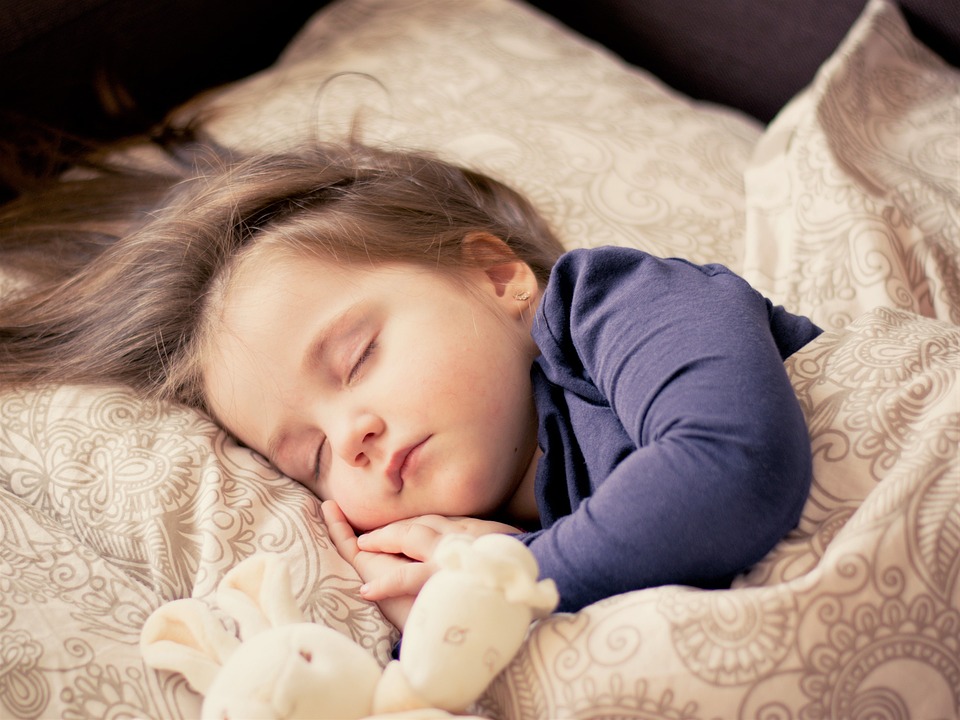Melatonin—it’s the buzz word with parents desperate for their kids to sleep. It’s been described as safe and natural. It’s a non-habit-forming, drug-free supplement that is naturally occurring in the body. Sounds great, right? Just the cure for your child’s allergy to sleep. But is melatonin the magic pill you’ve been looking for?
Bedtime and sleeping through the night are a huge source of stress and frustration for parents. Over 1,200 parents surveyed in New Zealand revealed that their top concern for their children was poor sleep. We all want our children to sleep well, and we want to sleep well too. We know that well-slept little people mean a happier and productive day for everyone. What happens when you have tried and tried to help your kids with quality sleep, but nothing seems to work?

Table of Contents
Is Melatonin the Answer?
According to sleep psychologists and experts, the first step in addressing a child’s sleep problem is always behavioural therapy. Parents should use behaviour modification strategies before and with any prescribed medication. Studies have shown that in 70% of children, behavioural strategies work and the use of melatonin is not needed. Most parents would prefer not to medicate their children even with a medicine that is drug-free and has limited side effects.
There has been a definite rise in the use of melatonin as a sleep aid. Likewise, there has been a rise in its use with children. In the US and Canada, melatonin is available over the counter and can be found in gummy form, specifically targeting use in children. In the UK, Australia and New Zealand, you will need a prescription from your doctor to give your child melatonin. Sleep experts and psychologists have expressed concern over the growing and prevalent use among children. Their main concern is that there are not enough studies on the effects of long-term use.
Professor David Kennaway, Head of Circadian Physiology at the University of Adelaide, has been studying melatonin for 40 years and warns about its side effects when the children are older. He stated, “Considering the small advances melatonin provides to the timing of sleep, and considering what we know about how melatonin works in the body, it is not worth the risk to child and adolescent safety.”
What is Melatonin?
Melatonin is a hormone. It is the only hormone secreted by the pineal gland, found near the centre of the brain between the two hemispheres. Among its many functions, melatonin is mostly known as the sleep hormone or the ‘hormone of darkness’.
The absence of light photoreceptor in the eyes triggers the production of melatonin. The hormone is released, helping to prime the body for sleep. It works as part of the body’s circadian rhythm to regulate sleep and wake cycles over a 24-hour period. Melatonin production rises in the evening hours and stays elevated during the night. The levels of melatonin in the body at night are 10x higher than daytime. As the night begins to fade and morning approaches, levels of melatonin start to drop and light signals the body that it is time to wake up.
Serotonin is a precursor to melatonin. Serotonin is a neurotransmitter which sends messages around the body. It is known as the happy or well-being chemical as it influences our mood. It is found in both the gastrointestinal tract and the brain. Serotonin is produced by exposure to sunlight and with the amino acid tryptophan, which is present in many high protein foods.
Why Is All This Important?
To achieve healthy sleep, we know that children need regular exposure to light, dark, consistent routines and healthy high protein foods.
Simplified:
- Darkness stimulates the production of melatonin
- Light inhibits the production of melatonin
- Melatonin is produced from serotonin
- Light stimulates serotonin production
- Serotonin is made from the amino acid tryptophan
- Tryptophan is present in high protein foods
Understanding how your child’s body works regarding their sleep and wake cycles can help you develop healthy sleep hygiene. In turn, this aids your child in getting the best possible sleep.
This reason is why I recommend things like going outside in the afternoon and exposing your children to sunlight. Make sure their room is really dark all night long and limit their screen time before bed. The light from electronic devices has been shown to inhibit the production of melatonin which causes a delay in sleep.
Melatonin Is More Than Just a Sleep Hormone
Melatonin also regulates the immune system, digestion, thyroid hormones and is part of the reproductive cycle. It also controls the onset of puberty. In studies with rats and mice, the long-term use of melatonin has shown to delay the onset of puberty. A study of 70 children over 3 years discovered no link between melatonin use and the onset of puberty. However, this study has been criticised for being too small and not following all the participants until they reached puberty. As melatonin has many other functions in the body, long-term use is concerning for medical professionals.
Interestingly, melatonin is also a veterinary drug. It is used to influence the reproduction of sheep and goats to make them more productive for the industry.
It also plays an essential role during pregnancy and birth. Melatonin levels rise during pregnancy and reach peak levels at birth. Its anti-inflammatory and antioxidant properties play a protective role during ovulation and implantation. It also provides protection to the growing fetus. Women often go into labour at night when melatonin levels are at their highest. It then plays an important part in labour, together with the hormone oxytocin. Finally, maternal melatonin is passed to the baby, making them very sleepy for the first few weeks of life. So while melatonin is mostly known as the sleep hormone, it also has vital roles to help with other bodily functions.
Melatonin Use with Children
In Australia, melatonin use is primarily for treating insomnia in patients over the age of 55. But, use with children has been on the rise. Researchers agree that short-term use appears to be safe, with little to no side effects. In Australia, you will need a prescription from your doctor, and they can provide you with dosage amounts and timing. The use of melatonin in children should always be in conjunction with behavioural therapies to help solidify healthy sleep in all areas. Melatonin is particularly useful for children with autism, ADD and ADHD.
Melatonin Use and Autism and ADD
Sleep disorders and insomnia are very common in children on the autism spectrum, with 50% to 80% of autistic children suffering from sleep disorders. This lack of sleep can also contribute to social and behavioural difficulties during the day. Often, this leads to more stress for both children and parents.
Addressing sleep concerns can help children with autism function better during the day, and this is very rewarding for families. There is a direct link between a lack of sleep, sleep quality and hyperactive and aggressive behaviours during the day. Studies and trials have been successful, showing an improvement in the onset of sleep and, subsequently, behaviours during the day. It is also favourable for parents as melatonin is naturally occurring in the body. As mentioned earlier, it also has limited side effects, is non-addictive and does not cause sleepiness the following day. Studies have shown an ability to fall asleep faster, improved sleep quality and less waking overnight.
Children with autism can have difficulties sleeping for a range of reasons:
- Difficulty with identifying and understanding social cues
- Irregularities in melatonin production. Studies found releases during wrong times of the day, or too much during the day and not enough at night.
- Increased sensitivity to stimuli
- Higher levels of anxiety
How Melatonin Can Help and What It Won’t Do
Melatonin does have a place for use and is beneficial in several different circumstances. However, it is not a magic pill. It is essential to recognise what melatonin does and does not do to understand why it may or may not work for your child. Melatonin works by matching our internal systems without our external environment. When night falls, melatonin releases signals to the body for sleep and rest. It is not a sedative; it will not make your body go to sleep.
Interestingly, studying melatonin in rats and mice showed they had high levels of melatonin at night. However, this also signalled them to be awake and search for food. It begs the question for scientists that if the body is used to waking at night for extended periods, will extra doses of melatonin be useful? If this is the case, it is not recommended in treatment for insomnia. In relation to children, it is not going to be helpful for continued and prolonged night wake-ups. The American Academy of Sleep Medicine does not recommend its use for insomnia.
It has, however, been shown to be useful with sleep phase shifts—this means helping move bedtime from 10 pm to 7 pm. It helps reset and regulate the body’s circadian rhythms.
Before Going to Your Doctor for a Prescription
Good Sleep Hygiene
Sleep hygiene is all about the healthy habits that promote a good night’s sleep. It means understanding your child’s biological sleep needs, following an age-appropriate consistent routine and setting up an excellent sleep environment.
Timing
Understanding the best time for your child to sleep will go a long way in helping them sleep better. Biological windows for sleep are between 9–10 am, 12–2 pm and 6–7 pm. Your child’s age and their current sleep needs will determine how many naps they currently need.
A toddler from 18 months will generally require one long nap a day between 12 pm and 1 pm, then an early bedtime around 6 to 7 pm. From 3 years, most children will have dropped their daytime nap, but still need a nice and early bedtime between 6 and 7 pm. You have to understand and respect your child’s biological sleep needs to help with their ability to fall asleep.
Sleep Requirements by Age
These are the ranges of required sleep per age. They are flexible and will still depend on every individual but provide a good baseline.
| Age | Amount of Sleep (in Hours) Needed Over 24 Hours |
| 1 Month | 16–20 |
| 2 Months | 16–18 |
| 3 Months | 14–17 |
| 4 Months | 14–16 |
| 5 Months | 13–16 |
| 6 Months | 13–14 |
| 9 Months | 13–14 |
| 12 Months | 13–14 |
| 18 Months | 13–14 |
| 2 Years | 12–14 |
| 3 Years | 12–14 |
| 4 Years | 11–12 |
| 5 Years | 11–12 |
Predictable and consistent nap and bedtimes also help set your child’s circadian rhythms. It signals your child’s body when it is time to be awake and when it is time to be asleep. When naps and bedtime occur at different times, it can be difficult for your child’s body to know when it is time to go to sleep. Essentially, their body gets confused with what it should be doing.
Limiting screen time before bed can also help your child fall asleep at bedtime. The blue and green light emitted from screens can inhibit the release of melatonin which helps with the onset of sleep. Keeping the lights low can also help your child’s body naturally prepare for sleep.
Sleep Environment
Providing the perfect environment for your child’s sleep can also aid with their ability to fall asleep and stay asleep for longer. The ideal setting for sleep requires three elements: darkness, cool temperature and white noise.
Darkness stimulates the production of melatonin and lets your child’s body know it is time to sleep, whereas light is an inhibitor to the secretion of melatonin. A cool temperature also helps with sleep. Our bodies naturally drop in temperature overnight, and a cool environment provides a safe and effective sleep temperature. Meanwhile, white noise is useful in a few different ways. It becomes a sleep cue signalling your child that it is time to sleep. It also masks outside noise, and for newborns, it triggers the calming reflex.

Bedtime Routines
A consistent, predictable and calm bedtime routine at an age-appropriate time is one of the most helpful things you can do to help your child fall asleep easier and stay asleep longer. The key is consistency! Your child’s bedtime routine helps them feel safe, know what is expected of them and works to cement their circadian rhythms. When their bodies know what is happening, they can function at an optimal level. What you do in your bedtime routine is less important than the consistency of your routine.
A general bedtime routine might include:
- Bath
- Putting on pyjamas
- Tidying ups toys
- Reading a book
- Singing a lullaby
- Few cuddles with mum and dad before bed
Behavioural Therapy
Before resorting to medication, even if it is a natural and safe option, try some behaviour modification. It is not as scary or scientific as it sounds. Behaviour modification is used to change an undesirable behaviour through consequences, either positive or negative.
Refusing to go to bed and having bedtime battles and many wake-ups during the night could be some reasons for undesirable behaviour you want to change. Personally, I prefer to work with positive consequences to help our children learn to go to bed and stay in bed.
Sticker Charts
As a former teacher, I love sticker charts. Lots of children love sticker charts too. Sticker charts are a great way to motivate your child to demonstrate specific behaviour, such as going to bed or staying in bed. Choose a toy or a reward for getting a certain amount of stickers. Make sure your child can see the reward or a picture of the reward. They need to know what they are working for.
When they get five stickers in a row, give your child lots of praise and their reward. If your child is too young to understand the concept, an immediate reward is helpful. You might have your bedtime routine poster up. Give them a sticker or stamp on their hand when they get in bed, close their eyes and lie very still. In the morning give lots of stickers and lots of praise for a job well done.
The Sleep Fairy
The sleep fairy is one of my favourite ways to encourage children to both go to bed and stay in bed all night. How much you can enjoy this little activity depends on your child’s age. If your child is 4 or older, you can sit down together and write the sleep fairy a note. If your child is younger, you can talk to them about the sleep fairy and how she likes to visit children and see them sleeping all night long in their bed.
Before you go to bed, sprinkle glitter on your child’s bed and bedside table, leave a return note and a little treat for your child when they wake up. You can use the sleep fairy as and when you need to.
Silent Returns
Silent returns are an excellent strategy for helping your child learn to stay in bed at bedtime and during the night. This strategy is about setting clear limits for your child. When we, as parents, are inconsistent, we actually confuse and consequently encourage our child’s behaviour issues around bedtime.
When it is unclear to the child if mum and dad will yell, lay in bed with them, shut the door, let them fall asleep on the couch, go into their parents’ bed or make them stay in the room, then they will try for whatever they can get that night. This is called intermittent reinforcement. Intermittent reinforcement can actually be the most challenging behaviour to change because there have already been so many different responses. Pick a strategy and stay consistent.
Silent returns can help you set a clear limit around bedtime. Explain to your child before they go to bed that they need to stay in bed all night and have a good sleep. When they get out of bed, you put them back to bed as many times as needed without speaking. The reason you don’t talk is that speaking provides a reward, either positive or negative. A negative reward is if you are yelling, and it is positive if you are giving cuddles and being sweet. To the child, it doesn’t matter what kind of attention they receive. No talking provides no reward. Keep putting them back to bed.
Role Play
Role playing is a great way to help your child understand and enjoy bedtime. My boys love to play bedtime. During the day they like to boss me around and tell me it’s time for bed, they read me a book, give me a kiss and tell me it’s time for sleep. Role play is a great way to help your child love bedtime. Also, toddlers and children love to boss others around. Whether they put you to bed or their toy, it’s a great way to encourage a consistent and predictable bedtime routine.
The use of melatonin is on the rise. With such a safe reputation, its use in children will continue. It is very beneficial to use, especially with children on the autism spectrum. However, even though this drug is touted as safe, medical professionals still agree that parents should work with behaviour strategies first before seeking medication. Have you used melatonin with your child? Tell us about your experience in the comments.



